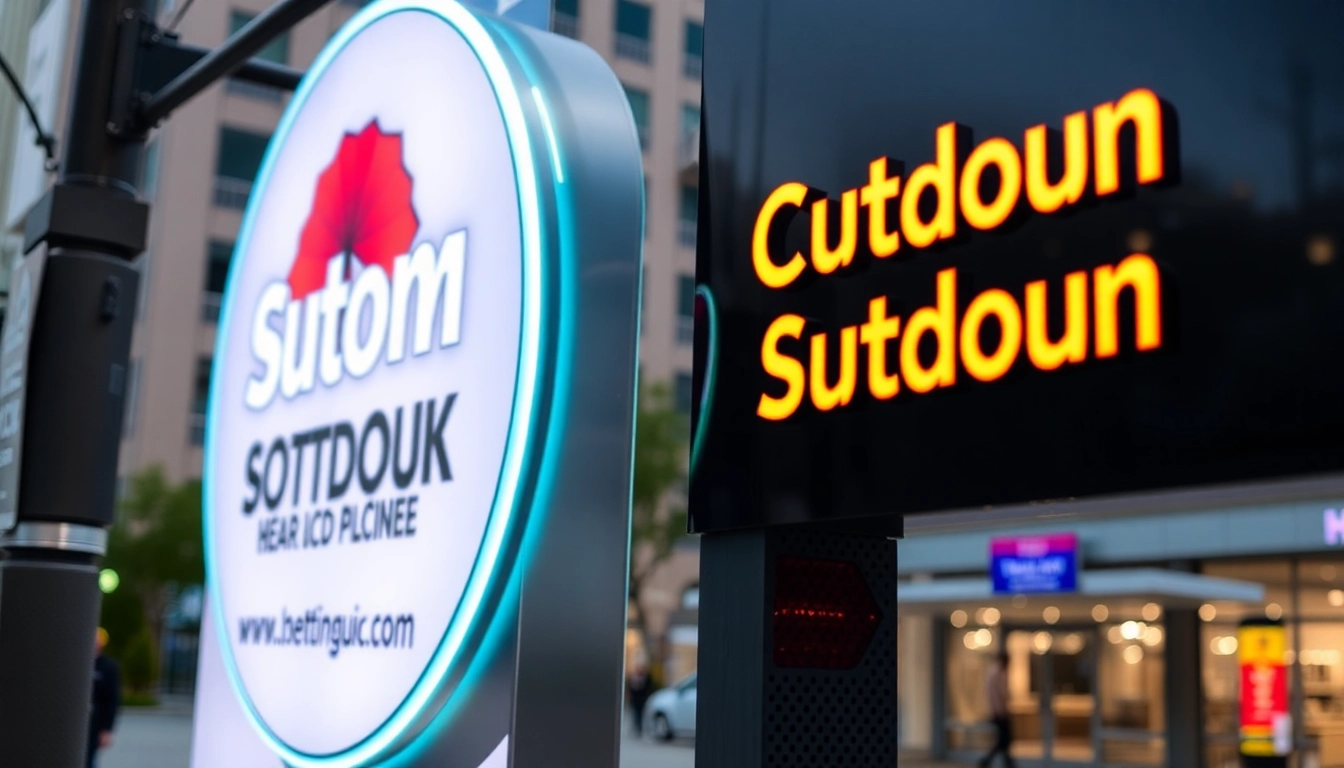Unlocking the Power of Custom Signs: The Ultimate Guide to Impactful Signage Solutions
In today’s highly competitive business environment, effective signage serves as more than just a visual marker; it is a strategic tool that can elevate your brand, attract customers, and create memorable experiences. Among the wide array of signage options available, custom signs stand out for their versatility, personalization capabilities, and ability to precisely communicate your unique message. Whether you’re a startup seeking to establish a presence or an established enterprise aiming for brand reinforcement, investing in high-quality custom signage can deliver tangible benefits that translate into increased foot traffic, higher sales, and long-term customer loyalty.
Understanding the Power of Custom Signs for Your Business
Importance of Signage in Branding and Customer Attraction
Signage plays a fundamental role in positioning your brand within the marketplace. First impressions often hinge on the visual cues presented in physical spaces, making your signage the face of your business. Well-designed custom signs communicate professionalism, credibility, and the core values of your brand at a glance. For example, a sleek, illuminated storefront sign immediately conveys a modern and customer-centric image, enticing potential customers to step inside. Moreover, consistent visual branding through custom signs—incorporating your logo, color schemes, and messaging—strengthens brand recall and fosters trust.
Types of Custom Signs and Their Unique Benefits
Custom signs encompass countless formats tailored to diverse business needs. Here are some prominent types:
- Building Signs: Establish your location and brand identity at the first glance. They can be crafted from materials like metal, acrylic, or wood and illuminated for accurate visibility day and night.
- Lighted & LED Signs: Use energy-efficient LEDs for vibrant, attention-grabbing displays that are perfect for 24/7 visibility and dynamic messaging.
- Safety & ADA Signs: Ensure compliance with legal standards while providing clear navigation and safety information.
- Outdoor Business Signs: Monument signs, banners, and pole signs that withstand weather elements while capturing attention.
- Digital & Electronic Signs: Dynamic content updated in real time, ideal for promotions and real-time engagement.
- Interior Signs: Wall graphics, window decals, and directional signs that enhance customer experience indoors.
- Yard & Sidewalk Signs: Cost-effective and portable options to promote specials, sales, and events in your local area.
- Banners & Flags: Flexible, eye-catching marketing tools ideal for temporary or seasonal campaigns.
- Tradeshow & Promotional Signs: Custom displays that attract attention at events, trade shows, and festivals.
Aligning Signage with Business Objectives and Industry Needs
The selection of your custom signs should align directly with your overarching business goals and industry-specific requirements. For a retail store, vibrant window decals and in-store wall graphics enhance the shopping experience and encourage impulse purchases. Healthcare providers need ADA-compliant signage that ensures patient safety and legal adherence. Restaurants benefit from attractive menu boards and directional signs to streamline customer flow. Understanding your target audience, the physical environment, and your branding objectives ensures that your signage strategy is coherent, impactful, and measurable.
Designing Effective Custom Signs: Best Practices and Tips
Choosing Colors, Fonts, and Materials for Maximum Impact
The visual elements of your signage are crucial for readability, brand recognition, and aesthetic appeal. Here are key considerations:
- Colors: Use contrasting colors that stand out and adhere to your brand palette. Bright colors like red and yellow attract attention, while cooler shades offer a more refined look.
- Fonts: Select clear, legible fonts suited to your brand personality. Sans-serif fonts are modern and clean, while serif fonts convey tradition and authority.
- Materials: Choose durable materials such as aluminum for longevity, acrylic for versatility and clarity, or wood for a rustic feel. Material choice impacts both aesthetic and functional performance, especially in exterior environments.
Incorporating Your Brand Identity Seamlessly
Your signage should be a natural extension of your overall brand identity. Consistency in logo placement, color schemes, and messaging ensures that your signs reinforce brand recognition. Use high-resolution logos and maintain brand fonts for a cohesive look. If possible, hire professional designers to create custom graphics that reflect your core values and resonate with your target audience.
Utilizing Digital Elements for Dynamic Signage
Digital signage offers unparalleled flexibility. Incorporate LED screens or digital message boards that can be updated remotely to display promotions, seasonal messages, or social media feeds. This interactivity not only keeps your content fresh but also engages passersby more effectively. Additionally, integrating QR codes or NFC technology can drive digital engagement, encouraging consumers to interact with your brand via their smartphones.
Materials and Technologies in Custom Signage
Popular Materials: Acrylic, Metal, Vinyl, and Wood
Each material offers distinct advantages tailored to different needs:
- Acrylic: Known for its clarity and sleek appearance, acrylic is ideal for illuminated signs, dimensional letters, and indoor graphics.
- Aluminum: Corrosion-resistant and lightweight, aluminum signs are suitable for outdoor use and large-scale displays.
- Vinyl: Flexible and versatile, vinyl can be printed with vivid graphics and applied as decals or banners.
- Wood: Provides a rustic or handcrafted aesthetic, perfect for boutique shops, cafes, and specialty stores.
Emerging Technologies: LED, Digital Displays, and Electronic Signs
The landscape of signage technology is rapidly evolving, with innovations like LED illumination, programmable digital displays, and interactive electronic signs. LEDs are energy-efficient, long-lasting, and provide bright, even lighting. Digital displays can showcase video content, animated graphics, and real-time updates, making them ideal for promotions or directional information. Electronic signs facilitate quick updates and remote management, ensuring your message is always relevant.
Durability and Maintenance Considerations
Choosing the right materials and technology impacts the longevity and upkeep of your signage. Outdoor signs must withstand weather conditions—rain, wind, sun—so materials like aluminum and treated wood are preferred. Regular cleaning, inspections, and timely repairs preserve your signs’ appearance and performance. Investing in high-quality materials reduces long-term costs and enhances your brand’s professionalism.
Compliance, Accessibility, and Safety Standards
ADA Regulations and Accessible Signage Design
Ensuring your signage complies with the Americans with Disabilities Act (ADA) is essential both legally and ethically. ADA-compliant signs feature tactile characters, high-contrast colors, and appropriate mounting heights. It’s vital for directional signs, restrooms, and emergency exits. Proper design minimizes legal risks and demonstrates your commitment to inclusivity.
Building Codes and Safety Requirements
Local building codes dictate structural, electrical, and safety standards for signage installation. For example, signs must be securely mounted, sealed against environmental elements, and wired safely if illuminated. Neglecting these regulations can lead to fines, liabilities, or safety hazards. Engaging experienced sign professionals ensures compliance and peace of mind.
Ensuring Your Signs Meet Legal Standards
Regular audits and consultations with legal experts or local authorities help keep your signage compliant. Use fire-retardant materials if required, apply appropriate safety labels and warnings, and adhere to zoning laws regarding size and placement.
Implementing and Optimizing Your Custom Sign Strategy
Strategic Placement for Maximum Visibility
The effectiveness of your signage hinges on its placement. Conduct a site analysis to identify high-traffic zones, sightlines, and competitor locations. Position signs near entrances, along busy roads, or in areas where your target market frequents. Use lighting and contrast to enhance visibility at night and in adverse weather conditions.
Cost-Effective Custom Sign Solutions
Balance quality with budget considerations by choosing appropriate materials and manufacturing processes. For instance, vinyl banners and yard signs are economical and highly customizable. Bulk ordering and digital printing also reduce costs. Prioritize signs that deliver the highest ROI—such as storefront signage and strategic outdoor displays—while scaling back on less impactful options.
Measuring Impact and Return on Investment
Track the effectiveness of your signage through metrics like increases in foot traffic, sales data, or customer surveys. Use unique promo codes or QR codes to assess direct engagement. Regularly review and adapt your signage strategy based on performance insights to ensure ongoing success.



